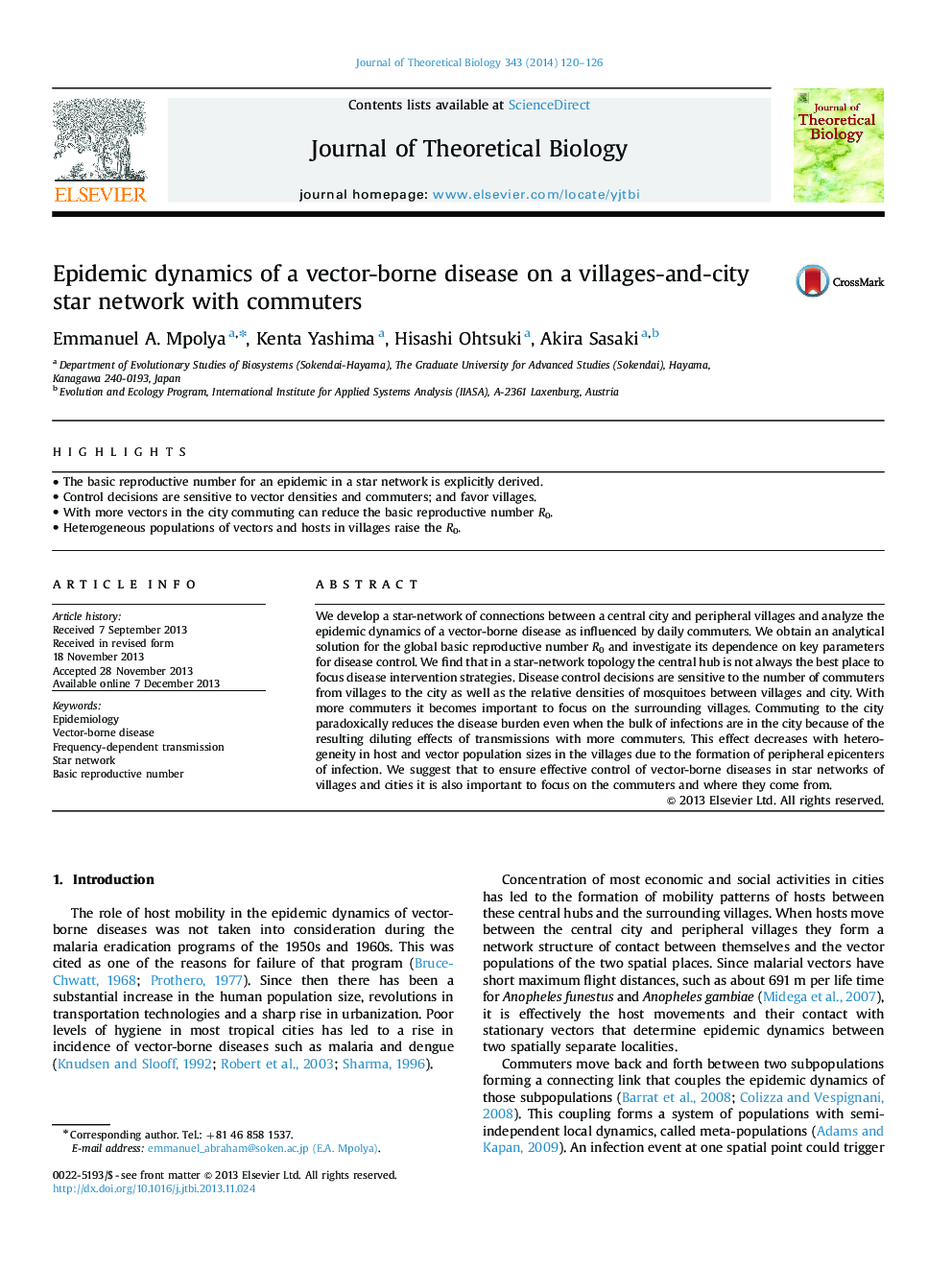| Article ID | Journal | Published Year | Pages | File Type |
|---|---|---|---|---|
| 4496278 | Journal of Theoretical Biology | 2014 | 7 Pages |
•The basic reproductive number for an epidemic in a star network is explicitly derived.•Control decisions are sensitive to vector densities and commuters; and favor villages.•With more vectors in the city commuting can reduce the basic reproductive number R0.•Heterogeneous populations of vectors and hosts in villages raise the R0.
We develop a star-network of connections between a central city and peripheral villages and analyze the epidemic dynamics of a vector-borne disease as influenced by daily commuters. We obtain an analytical solution for the global basic reproductive number R0 and investigate its dependence on key parameters for disease control. We find that in a star-network topology the central hub is not always the best place to focus disease intervention strategies. Disease control decisions are sensitive to the number of commuters from villages to the city as well as the relative densities of mosquitoes between villages and city. With more commuters it becomes important to focus on the surrounding villages. Commuting to the city paradoxically reduces the disease burden even when the bulk of infections are in the city because of the resulting diluting effects of transmissions with more commuters. This effect decreases with heterogeneity in host and vector population sizes in the villages due to the formation of peripheral epicenters of infection. We suggest that to ensure effective control of vector-borne diseases in star networks of villages and cities it is also important to focus on the commuters and where they come from.
